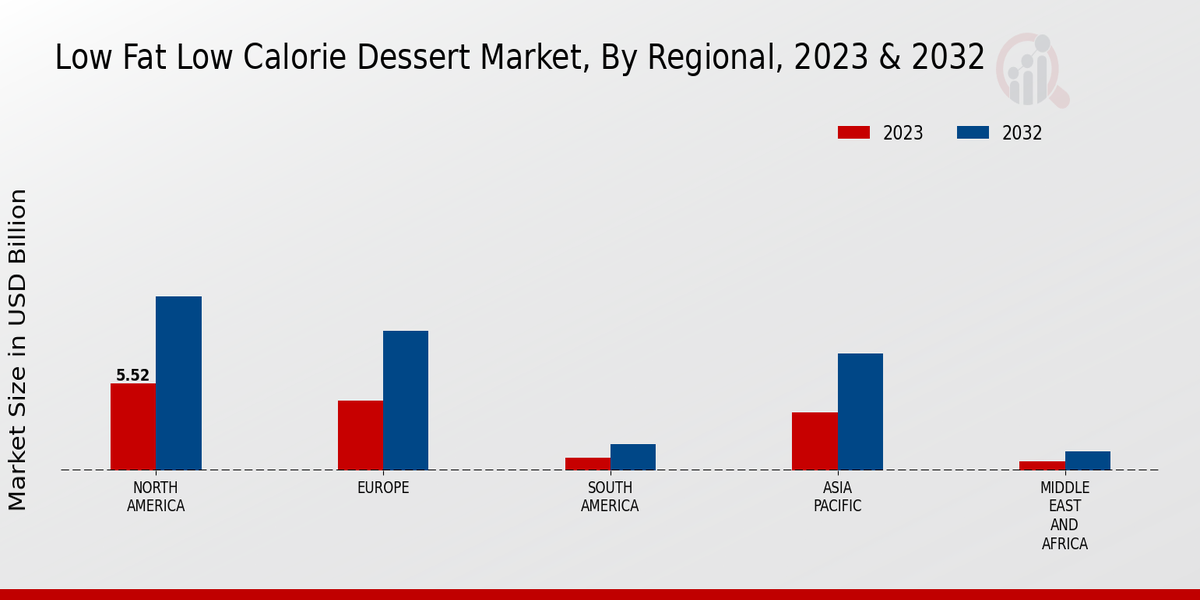Low Fat Low Calorie Dessert Market Summary
The Global Low Fat Low Calorie Dessert Market is projected to grow significantly from 17.55 USD Billion in 2024 to 41.47 USD Billion by 2035.
Key Market Trends & Highlights
Low Fat Low Calorie Dessert Key Trends and Highlights
- The market is expected to witness a compound annual growth rate (CAGR) of 8.13 percent from 2025 to 2035.
- By 2035, the market valuation is anticipated to reach 41.5 USD Billion, indicating robust growth potential.
- in 2024, the market is valued at 17.55 USD Billion, reflecting a strong consumer interest in healthier dessert options.
- Growing adoption of low fat and low calorie desserts due to increasing health consciousness is a major market driver.
Market Size & Forecast
| 2024 Market Size | 17.55 (USD Billion) |
| 2035 Market Size | 41.47 (USD Billion) |
| CAGR (2025-2035) | 8.13% |
Major Players
Danone, Nestlé, B Foods, Mondelez International, Kraft Foods Group, Unilever, Hershey Company, Post Holdings, PepsiCo, Pinnacle Foods, General Mills, Mars, Incorporated, Kellogg Company, Campbell Soup Company





















Leave a Comment